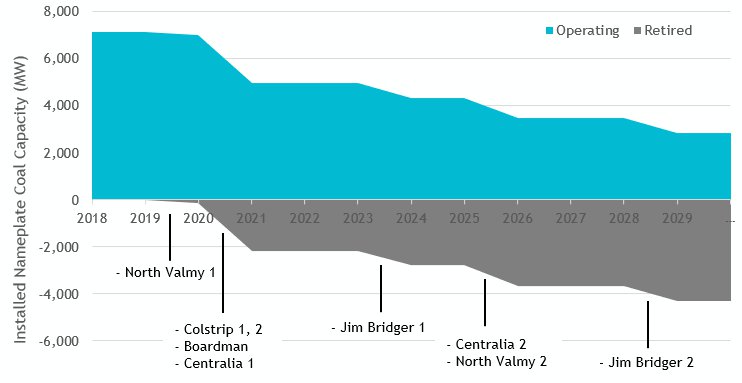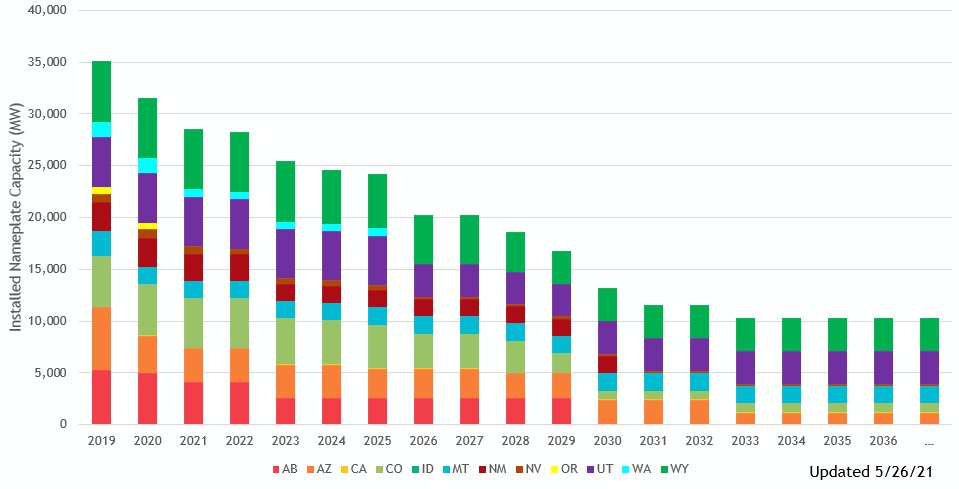Resource Retirements
Before 2020, resource retirements in the region had been minimal, with the closure of a small cogeneration natural gas plant in Idaho and about 120 megawatts of woody residue biomass plants. As demand for paper and newsprint has declined over the past decade, several local wood product manufacturers have suspended operations. Without the biofuel waste produced from the factories, the biomass plants have been forced to close as well.
Starting in 2020, the first of many planned regional coal unit retirements occurred, with the decommissioning of Colstrip units 1 and 2 in January, Boardman in October, and Centralia unit 1 in December. In a single year, the region lost about 2,050 megawatts of installed coal capacity. At the end of 2019, Idaho Power ceased participation in North Valmy 1 (of which it was a 50% owner), although the unit itself is not planned for closure until the end of 2021. Over the next decade, the region will lose a total of about 4,570 MW of coal capacity through planned retirements.
Coal Unit Capacity Over the Next Decade

Accelerated coal unit retirements are planned and occurring across the United States. Within the western interconnect, including Alberta and British Columbia, significant coal unit retirements are slated for the next decade. In 2019, there were just shy of 35 gigawatts of coal unit capacity operating in the WECC. By 2025, that amount will have dropped by over 10 gigawatts, and by 2030, a further 10 gigawatts. For an interactive map of the upcoming coal unit retirements, see the Council’s power supply webpage.
WECC-wide Coal Units in Operation – By State/Province

For more information on WECC-wide coal retirements, see “WECC Existing System and Retirements.”



